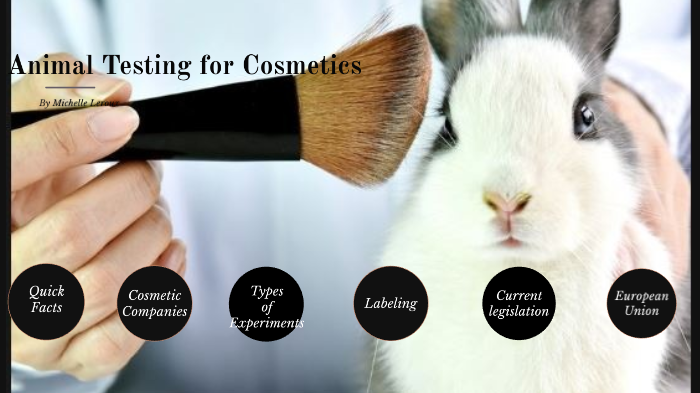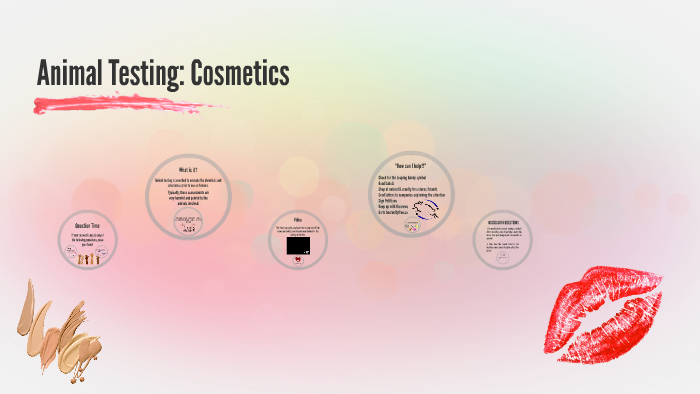The Complexities Of Animal Testing In Cosmetics: A Comprehensive Examination
The Complexities of Animal Testing in Cosmetics: A Comprehensive Examination
Related Articles: The Complexities of Animal Testing in Cosmetics: A Comprehensive Examination
Introduction
In this auspicious occasion, we are delighted to delve into the intriguing topic related to The Complexities of Animal Testing in Cosmetics: A Comprehensive Examination. Let’s weave interesting information and offer fresh perspectives to the readers.
Table of Content
The Complexities of Animal Testing in Cosmetics: A Comprehensive Examination

The use of animals in cosmetics testing has been a subject of intense debate for decades. While many consider it a cruel and outdated practice, others argue for its necessity in ensuring product safety. Understanding the intricacies of this issue requires a nuanced approach, considering both the ethical and scientific dimensions.
Historical Context and Ethical Considerations:
Animal testing for cosmetics has a long history, dating back to the early 20th century. The primary rationale was to assess the safety of ingredients and finished products, particularly in identifying potential irritants and allergens. Animals were seen as suitable surrogates for humans, with the belief that their biological responses were sufficiently similar to predict human reactions.
However, the ethical implications of animal testing have increasingly come under scrutiny. The practice raises significant concerns about animal welfare, as it often involves inflicting pain, suffering, and even death on sentient beings. Animals used in testing are typically confined to cages, subjected to invasive procedures, and exposed to potentially toxic substances.
Beyond the immediate suffering, critics argue that the practice is morally reprehensible. Animals, like humans, possess inherent rights to live free from harm. The use of animals for cosmetic purposes, which are considered non-essential, is widely viewed as a violation of these rights.
Scientific Validity and Alternatives:
While the ethical concerns surrounding animal testing are undeniable, there is also a scientific debate regarding its validity and necessity. Proponents of animal testing argue that it remains essential for ensuring product safety, particularly in identifying potential carcinogenic or reproductive toxicities. They highlight the difficulty in accurately predicting human reactions using alternative methods.
However, advancements in science and technology have led to the development of a range of alternative methods that offer promising alternatives to animal testing. These include:
- In Vitro Testing: This involves using cells, tissues, or organs grown in a laboratory setting to assess the safety of ingredients. This approach eliminates the need for live animals and allows for more precise and controlled testing.
- Computer Modeling: Advanced computer simulations can predict the potential toxicity of chemicals, reducing the need for animal testing.
- Human Volunteers: In some cases, human volunteers can be used to test the safety of products, provided appropriate ethical guidelines and informed consent are obtained.
These alternative methods have shown significant progress in replicating the complexities of human biology, offering a more ethical and scientifically robust approach to assessing product safety.
Regulatory Landscape and Global Progress:
The global landscape regarding animal testing for cosmetics is evolving rapidly. Many countries, including the European Union, India, and Israel, have banned or restricted the use of animals for cosmetics testing. These bans are often accompanied by strong regulatory frameworks promoting the development and use of alternative methods.
In the United States, while animal testing is still permitted for cosmetics, the industry is moving towards a more humane approach. The Leaping Bunny program, a globally recognized certification, identifies companies committed to cruelty-free practices and the use of alternative testing methods.
Challenges and Future Directions:
Despite the progress made in reducing animal testing for cosmetics, significant challenges remain.
- Scientific Validation: While alternative methods are advancing rapidly, they still need to be fully validated and accepted by regulatory bodies. The scientific community needs to continue investing in research and development to ensure the reliability and accuracy of these methods.
- Industry Adoption: Many companies, particularly in emerging markets, still rely on animal testing. Encouraging wider industry adoption of alternative methods requires strong regulatory frameworks, consumer pressure, and financial incentives.
- Consumer Awareness: Consumers play a crucial role in driving change. Increased awareness of the ethical implications of animal testing and the availability of cruelty-free alternatives can encourage companies to adopt more humane practices.
The future of cosmetics testing hinges on continued innovation, collaboration, and a commitment to ethical practices. Investing in research and development of alternative methods, promoting transparency and accountability in the industry, and empowering consumers to make informed choices are crucial steps towards a future where animal testing is no longer necessary.
FAQs about Animal Testing in Cosmetics:
Q: What is the main purpose of animal testing in cosmetics?
A: Animal testing is primarily used to assess the safety of cosmetic ingredients and products. This includes identifying potential irritants, allergens, and other adverse effects.
Q: What are the most common animals used in cosmetics testing?
A: The most commonly used animals in cosmetics testing include rabbits, mice, rats, and guinea pigs.
Q: What types of tests are conducted on animals?
A: Common animal tests include skin irritation tests, eye irritation tests, and sensitization tests. These tests often involve exposing animals to the test substance and observing their reactions, including redness, swelling, and other signs of irritation.
Q: Are there any alternatives to animal testing?
A: Yes, there are numerous alternatives to animal testing, including in vitro testing, computer modeling, and human volunteer testing. These methods are becoming increasingly sophisticated and are often considered more ethical and scientifically valid.
Q: Is animal testing for cosmetics legal in all countries?
A: No, animal testing for cosmetics is banned or restricted in many countries, including the European Union, India, and Israel. However, it is still permitted in some countries, including the United States.
Q: What can consumers do to support cruelty-free cosmetics?
A: Consumers can support cruelty-free cosmetics by:
- Looking for the Leaping Bunny certification: This certification identifies companies committed to cruelty-free practices and the use of alternative testing methods.
- Reading product labels carefully: Look for labels that state "cruelty-free" or "not tested on animals."
- Supporting companies that are actively working to reduce or eliminate animal testing.
Tips for Choosing Cruelty-Free Cosmetics:
- Research brands: Many companies are transparent about their testing practices. Research brands online or through cruelty-free organizations to find those that do not test on animals.
- Look for certifications: The Leaping Bunny certification is a reliable indicator of cruelty-free practices.
- Read product labels: Pay attention to labels that explicitly state "cruelty-free" or "not tested on animals."
- Support companies that are actively working towards animal-free testing: Companies that are investing in alternative methods and promoting transparency in their practices deserve support.
Conclusion:
The use of animals in cosmetics testing is a complex issue with significant ethical and scientific considerations. While the practice has been historically prevalent, advancements in alternative methods offer promising solutions for ensuring product safety without resorting to animal testing. By embracing these alternatives, fostering transparency, and encouraging consumer awareness, the cosmetics industry can move towards a more humane and ethical future. The ultimate goal should be to create a world where animal testing for cosmetics is a relic of the past, replaced by a more sophisticated and compassionate approach to product safety.




:max_bytes(150000):strip_icc()/GettyImages-10031716-cdfc59536c744f7a8906057ce6dd832b.jpg)
/GettyImages-1316412895-c10088ce59774d329891a246daa68dda.jpg)


Closure
Thus, we hope this article has provided valuable insights into The Complexities of Animal Testing in Cosmetics: A Comprehensive Examination. We thank you for taking the time to read this article. See you in our next article!
You may also like
Recent Posts
- The Art Of Persuasion: A Comprehensive Guide To Makeup Product Label Design
- A Comprehensive Look At Mary Kay Cosmetics: Reviews, Insights, And Considerations
- Affordable Skin Care: A Guide To Effective Products Under INR 100
- Navigating The World Of Mary Kay Discounted Products: A Comprehensive Guide
- The Power Of High-Resolution Images: A Guide To Acquiring The Best Visuals For Your Projects
- The Power Of Reviews: Navigating The World Of Makeup Products
- Swiss Beauty Makeup: A Comprehensive Guide To Quality And Affordability
- Embracing Natural Beauty: Makeup Tips And Techniques For Women Over 50
Leave a Reply